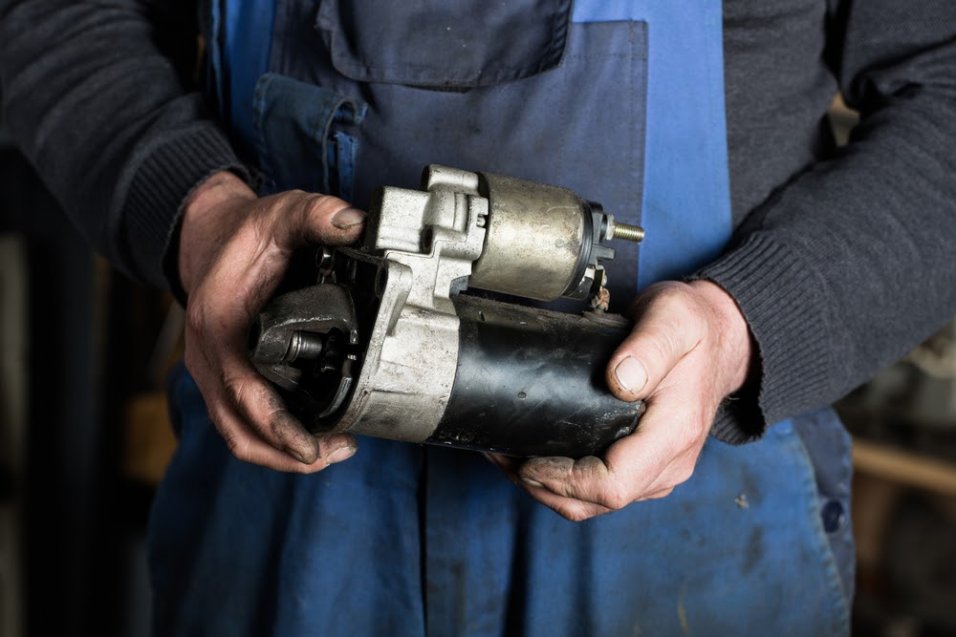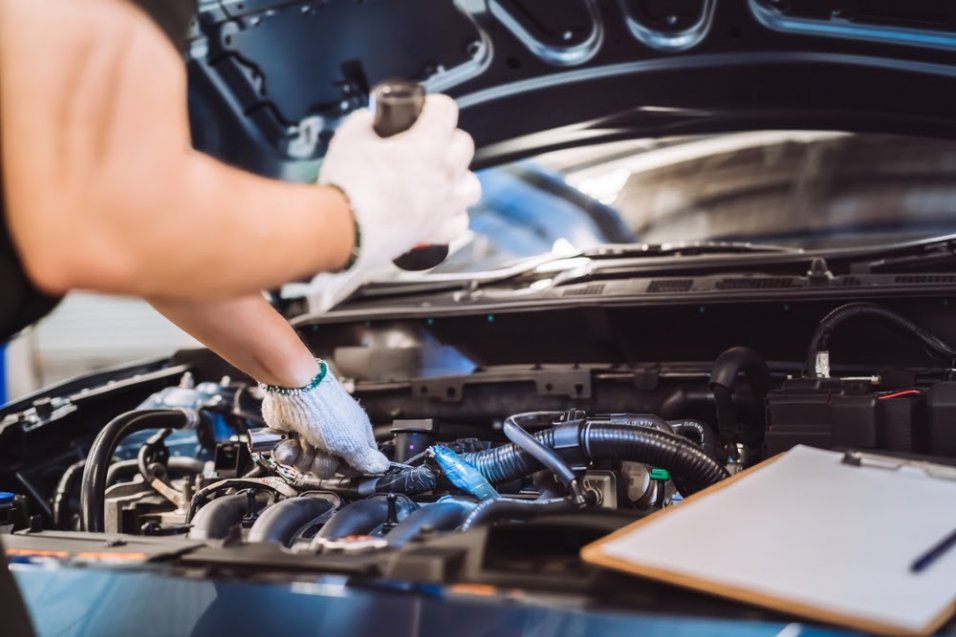Professionals to DIY
We're Online 9am - 5pm
On Orders Over £30
How to Start a Car When the Starter Motor Has Gone
Issues with a starter motor can be the result of several mechanical problems. Use our guide below to help you examine the car safely and pinpoint the issue.

start car issues
A faulty starter motor is a common issue that we've all dealt with at some point in our lives. Some people's fondest and worst memories of an old car are just trying to get it started in the morning. Since the introduction of keyless ignitions, this defect has become less common, but many people are still struggling with the issue.
Unfortunately, if the starter motor has completely gone there’s no way to get your car going again. However, when a vehicle doesn't start, it's typically to do with the battery's insufficient voltage to start the motor.
Here's how to inspect a starter motor to determine whether it has completely died or if it's the battery causing the issue.
What is a Starter Motor?
A starter motor is simply an electric motor that turns your engine on when you switch the ignition. To do this, the starter motor requires a lot of torque to turn the engine at such fast speeds, so that it pulls fuel and air into the cylinders and compresses them at the same time.
How Does a Starter Motor Work?

starter motor works
When you turn the key to start the car, the engine will turn over and then cranks. Getting the engine to crank is the most challenging aspect, requiring a steady flow of air into the engine, achieved through suction (turns over).
A common issue with cars is when they fail to turn over. This is usually due to a lack of air, which means that fuel can't combust. The starter motor's job is to turn over the engine during the ignition. Successful ignition allows the starter motor to engage, turning the engine over and allowing suction of air.
On top of the engine is the flywheel. Attached to the flywheel is a ring gear around the edge, fitted to the crankshaft's end. The starter motor features a pinion, which fits the grooves of the ring gear. When you switch the car's ignition on, the electromagnet inside the body engages and pushes out the rod attached to the pinion. The pinion meets the flywheel, and the starter motor turns. The engine then turns over and sucks in air and fuel with great force. Finally, the starter motor disengages and the electromagnet stops.
Has the Starter Motor Gone?
First, we need to check whether the starter motor has gone or if it's the battery that's causing the issue.
If you turn the ignition and the car doesn't start, it could be that the battery is dead. If the starter motor is the issue, you will have likely noticed one or more of the following symptoms of a starter motor dying:
- Grinding — an unpleasant grinding noise is typically the first noticeable symptom of a bad starter motor. It's caused by the worn-out starter drive gear or when the starter motor doesn't engage properly.
- Freewheeling — do you get a whining sound when you turn the ignition switch? If so, it's likely that the starter gear is not engaging the flywheel.
- Smoke — if you're noticing smoke pouring from the car when switching the ignition, the battery may be delivering too much juice to the starter. This could be the result of the starter shorting, working too long or a connection issue.
- Oil soak — the starter sits below the engine and is therefore vulnerable to fluids leaking from the engine above and soaking it in oil. If noticed early on you can fix the leak, and it may be fine, but if it's completely soaked, you will need to replace the starter motor.
- Damaged solenoid — the solenoid is responsible for delivering the electric current from the battery to the starter motor when the ignition is turned. If the solenoid is damaged, the starter may not be getting the power it needs to get the car going.
As you can see, a faulty starter motor may be due to several reasons. As well as the above, you’ll also need to check the following:
- Battery
- Battery Cables
- Transmission
- Fuel In The Tank
- Security Light
- Antitheft System With Starter Immobilizer
If the battery is weak or in poor shape, it may be enough to cause the starter motor to fail. The battery doesn't have to be completely dead to cause issues. At the battery, a poor connection at the terminal may cause a clicking sound when switching the ignition.
Corrosion of the battery can also cause issues. It's not uncommon for corrosion to occur on the battery terminals over time. A weak battery terminal generates a weak feed of electrical current to the starter motor. You can remove corrosion by using a wire brush. Corrosion can also be present within the wire and the area between the starter battery and engine.
As you switch the ignition, if you notice that the engine cranks slower and slower followed by a clicking sound, it may lack power from the battery. You may also see that the lights on your dashboard do not appear as they should. This is another sign of no power or a lack of power from the battery.
You can usually determine if it's a lack of power from the battery by testing your headlights. If they’re weak or failing to come on, it is most likely that the battery is dying or dead.
If you determine that the battery is not the cause, there are two quick checks you can make to confirm it's the starter motor:
- The ignition switch is unresponsive, doesn't feel right and only starts the engine when the key is wiggled around.
- You can see that the solenoid control wire has an obvious connection issue.
How to Examine the Starter Motor and Find Cause of Issues

car starter motor
Ok, so you've determined that it is not the battery causing the problem and it's most likely the starter motor that has the issue. Now what?
If you’re suffering from issues with the starter motor but can get the engine going eventually, follow the guidance below to help you inspect the starter motor and find the problem.
If you're not an engineer and don't feel comfortable making these checks yourself, take the vehicle to a garage and get your car inspected.
Examine the Connections
First things to do is make sure the battery's current connections to the starter motor are secure and corrosion-free. The battery powers the starter motor, so it's important everything is in good working order.
If you notice any connections are loose, you can fasten them up with a ratchet. If connections look sound, follow the cable leading to the starter and ensure no slack or cable damage. A damaged cable will need replacing immediately.
Inspect the Engine Earth Connection
Earth cables can get damaged, and when they do, starting the car may become sluggish. When one cable fails to work optimally, it affects the whole system and might be why you can't turn the engine. If you're sure the earth cable is the issue, it will need replacing.
Examine the Solenoid Cable
The solenoid cable is responsible for connecting the starter to the ring gear of the transmission. If you notice a cranking sound, it's likely to be an issue with the solenoid cable. Examine the cable for rust, grime and general wear and tear.
Check for Corrosion
Corrosion is a common culprit of car issues and failures under the bonnet of a car. Cables are susceptible to corrosion as it disturbs the conductivity of the engine and connections. You can remove corrosion by cleaning the terminals with water and an equal measure of sodium bicarbonate and rinsing with hot water. Check the solenoid, positive and earth cable for corrosion and treat where necessary.
Getting the Starter Motor Fixed or Replaced
If you have examined your starter motor and discovered an issue, the next step is to get a qualified engineer to look at the problem. They will be able to tell you if it can be fixed or needs replacing.
You could attempt to repair or replace the starter motor yourself. We advise that you always use the right tools and wear the appropriate safety gear when working on your vehicle.
In need of a replacement starter motor or the tools and safety gear required to repair one? Visit our online store now for some fantastic deals on car parts and accessories.




